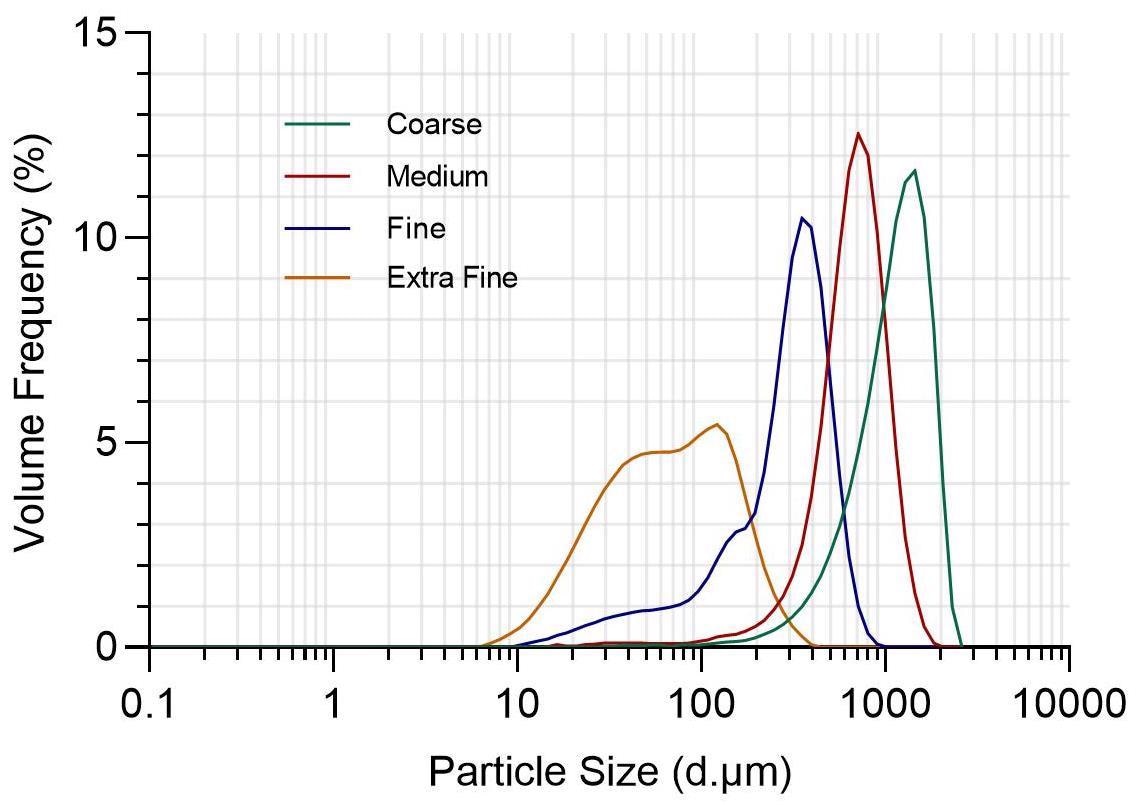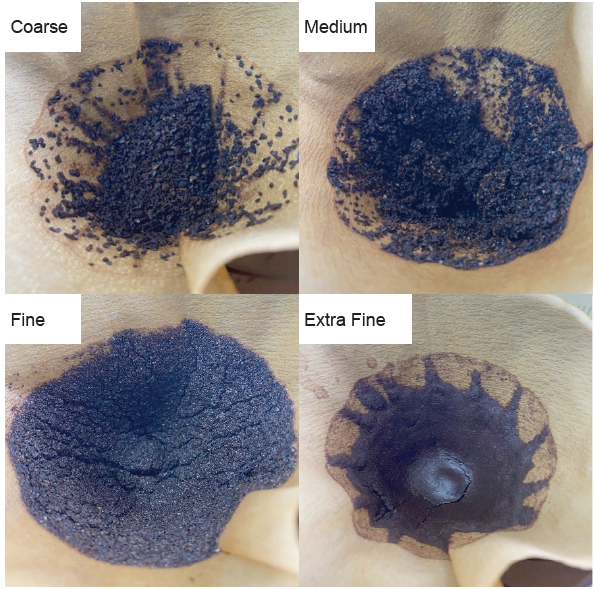One of the most popular drinks worldwide, coffee, is brewed using beans that are grown on a coffee plant and are then processed and roasted. Coffee plants grow in an area called the bean belt and thrive in tropical areas near the equator. In this app note, Bettersize Instruments examine how particle size affects coffee extraction and the TDS of brewed coffee.
How to Measure Particle Size of Coffee Powder
Video credit: Bettersize Instruments Ltd.
Every year for the last decade, coffee production and consumption has significantly increased. The International Coffee Organization (ICO) estimates that by March 2021, the global coffee bean production and consumption for the 2020/21 coffee year will be 171.89 million and 164.5 million 60 kg bags of beans, respectively1.
If full consumption at an ICO-predicted unit price of 120.36 US cents/lb is assumed, the projected annual income from coffee beans for coffee year 2020/21 will be 26.19 billion US dollars.1
Coffee has a highly profitable and enormous market, which leads to a rising focus on the qualities of coffee beans, ground coffee and brewed coffee.
Raw coffee beans are initially selected, processed and then roasted before they are ground and brewed to make coffee.
The process of roasting beans involves a series of controlled chemical reactions that draw forth the desired substances in raw coffee beans that provide the ever so important coffee flavor.
The hot water during the brewing process extracts these effective substances, which contribute to the unique aroma and flavor associated with coffee.
Many principles are involved in the sophisticated process that is extraction, including thermodynamics, transport phenomena and fluid dynamics.
There are several parts of the brewing process that impact the effectiveness of coffee extraction including brewing method, brewing time, water temperature, the ratio of water to coffee ratio and the particle size of the ground coffee.
The particle size of ground coffee, in particular, determines the final characteristics of the brewed coffee as well as the level of extraction and the length of extraction time.
An experiment was conducted by the Bettersize Laboratory for the purpose of investigating how particle size and size distribution of ground coffee might impact the effectiveness of coffee extraction using laser diffraction instrument.
Measuring Particle Size Distribution of Ground Coffee
The sample material for the experiment was commercial roasted Arabica coffee beans harvested from Yunnan, China.
Like other coffee, the beans from this region are within the bean belt. However, these beans are known for being exceptionally smooth with chocolate tones and a medium body.

Figure 1. Four grinds of ground coffees. Image Credit: Bettersize Instruments Ltd.
Figure 1 shows the four categories into which the beans were ground and sieved: extra fine, fine, medium and coarse.
The Bettersizer 2600 with the dry dispersion unit was used to investigate the relative coffee particle sizes. The Bettersizer 2600 provides accurate measurement results for particles with sizes ranging from 0.02 to 2600 microns (µm) through the use of unique Fourier and inverse Fourier optical systems.
The laser particle size analyzer is able to produce results from both the wet and dry dispersion unit. The dry dispersion unit was used in order to ensure accurate results because there was a potential for the particle size2 of the ground coffee to change when in contact with water.
To minimize the effects of random errors, all measurements were repeated at least three times. Figure 2 shows the particle size distributions of the four grinds obtained from the Bettersizer 2600.

Figure 2. Particle size distributions of four types of ground coffee, obtained by the Bettersizer 2600. Image Credit: Bettersize Instruments Ltd.
Figure 2 also shows how the modes of four grinds of coffees locate further towards the fines when the grinding level is increased. This makes it evident that the average particle sizes of ground coffee decrease from coarse grinds to finer grinds.
The presence of agglomerated coffee particles in the extra fine ground coffee is suggested by size distributions being relatively narrow, except for the extra fine grind. This may be because finer particles have a larger surface-to-volume ratio, and so higher surface energies are more likely to agglomerate the finer particles into larger particles.

Figure 3. Average D50s of four types of ground coffees, with error bars displayed. Image Credit: Bettersize Instruments Ltd.
Figure 3 demonstrates the D50s of the extra fine, fine, medium and coarse grinds in microns (µm) which were 61, 290, 623 and 1093, respectively.
These results show the Bettersizer 2600’s capability to accurately distinguish and monitor the particle sizes of ground coffees at different grinding levels.
Examining Extraction Level of Brewed Coffee
The four types of ground coffee were all brewed in order to investigate how extraction was impacted by varying particle sizes.
Other brewing conditions, such as the water temperature, volume of water used, the mass of ground coffee and brewing method, were all controlled to be identical to ensure that the only variable affecting extraction level was the particle size of ground coffee.
The experiment utilized a pour-over brewing method using the Hario V60.
The upper part of a Hario V60 consists of a conical cup which contains filter paper and ground coffee. Hot water dripped into the pot under gravity after flowing through the cup.
It is recommended to use 140 mL of water for every 8 g of ground coffee to achieve a perfect brew for this specific type of coffee beans.
To ensure the recommended ground coffee to water ratio, a balance was set up. An electric eater boiler with built-in temperature control and digital temperature display was used to ensure the hot water temperature was maintained at 90 °C.

Figure 4. Brewed coffees of four grinds in glass cups. Image Credit: Bettersize Instruments Ltd.
Figure 4 shows the different brewed coffees after being poured into transparent glass cups to observe their colors. The lightest brown color was produced by the coarse grind; the coffee in the glass cup was still relatively clear and the bottom of the cup was still visible.
As the particle sizes of the ground coffee decreased and the grind got finer, the colors of the brewed coffees gradually got darker and darker. The extra fine grind had the darkest brown of brewed coffee: the liquid was no longer transparent and the bottom of the cup could hardly be seen.
By measuring and comparing the total dissolved solids (TDS) concentrations and the brewed masses, the extraction levels of four types of brewed coffees were examined.
TDS is used to measure how many solid contents are present in a liquid medium in units of parts per million (ppm), where 1 ppm suggests 1 mg of dissolved solids per kg of liquid.
In the context of this experiment, a lower TDS number indicates a smaller amount of soluble contents from the coffee beans are present in the brewed coffee.
Table 1. Brewed mass and TDS results of four types of ground coffee. Source: Bettersize Instruments Ltd.
| Grinds |
Brewed mass [g] |
TDS [ppm] |
| Coarse |
128.01 |
541 |
| Medium |
124.03 |
757 |
| Fine |
118.27 |
1050 |
| Extra Fine |
119.65 |
1166 |
The masses of brewed coffees decreased when ground coffee sizes decreased when the same amount of water was used in brewing, as shown in Table 1. Additionally, the TDS values decreased as grinds became coarser; the TDS concentrations were also inversely proportional to the brewed masses.

Figure 5. Coffee grounds of four grinds after brewing. Image Credit: Bettersize Instruments Ltd.
Figure 5 shows an additional finding of the experiment; that after brewing, the fine and extra-fine ground coffee particles were agglomerated and tended to move to the bottom part of the filter paper, forming paste-like mixtures.
In contrast, the left-over coffee grounds of coarse and medium coffee grinds were still distinguishably separated from each other.
It is likely that these observations were the result of the particles’ surface areas. Finer particles have larger contact areas with hot water during brewing compared to coarse particles, which is due to them having larger surface areas.
Having larger contact areas means that there is a longer period in which hot water flows through the ground coffees, which in turn increases the amount of water that will diffuse into and stay inside the coffee particles.
This then means that that less water leaves the coffee particles and subsequently drips into the pot, causing finer grinds to have a decrease in masses of brewed coffee. This results in finer grinds2 having greater extraction of effective substances from ground coffee, namely caffeine.
To sensibly investigate the coffee’s extraction levels, five colleagues in the Bettersize laboratory were asked to participate in a blind taste test of four types of brewed coffee.
It is crucial to note that taste tests are always subjective and the results are representative of personal opinions regarding this specific type of coffee beans brewed using the pour-over method.
According to the colleagues who participated in the taste test, the extra fine ground coffee was “strongly acidic and bitter” while the coarse and medium ground coffees were “bland, watery, lack of aroma.”
The coffee to receive the most compliments was the fine grind. It was noted to be “just about right, closest to coffee from a coffee shop”.
The masses and colors of brewed coffees, combined with the results from TDS measurements and taste test, were reflective of how the extractions of coarse and medium grinds were barely done, while the extra fine grinds were over extracted and therefore had a dark brown color, high TDS value and strongly acidic taste.
As all other brewing conditions were identical in this experiment, this shows how it is necessary to carefully control the particle sizes of ground coffees so that coffee with suitable extraction levels can be produced.
Conclusions
The flavor quality of brewed coffee and its extraction level are all significantly impacted by the particle size and size distributions of ground coffee.
In real-life practice, the impact of particle size of ground coffee may be compensated by other variables such as water temperature, brewing time and brewing methods.
Monitoring the particle sizes and size distributions of ground coffees is necessary in order to explore the perfect combination between these variables in order to produce perfectly brewed coffee.
The Bettersizer 2600 is a reliable and sophisticated instrument that provides the coffee industry with particle sizing solutions, including manufacturing packaged ground coffee, instant coffee, coffee machines and coffee bean grinders.
References
- Coffee Market Report, March 2021. International Coffee Organization March 2021.
- Severini, C.; Derossi, A.; Fiore, A. G.; De Pilli, T.; Alessandrino, O.; Del Mastro, A. How the Variance of Some Extraction Variables May Affect the Quality of Espresso Coffees Served in Coffee Shops: Espresso Coffee and Its Quality. J. Sci. Food Agric. 2016, 96 (9), 3023–3031. https://doi.org/10.1002/jsfa.7472.

This information has been sourced, reviewed and adapted from materials provided by Bettersize Instruments Ltd.
For more information on this source, please visit Bettersize Instruments Ltd.
